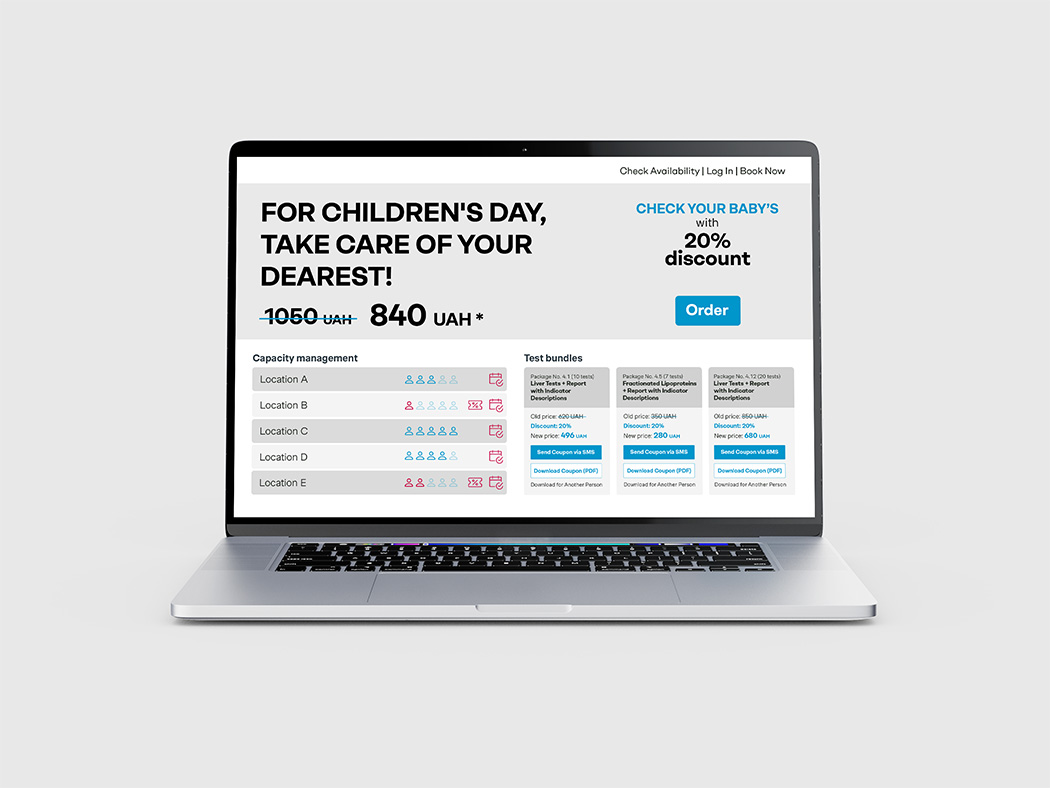Top healthcare providers leverage digital engagement tools to drive revenue streams and retain patients, yielding better outcomes for all. In the first installment of our 3-part blog series, we look at digital patient engagement and why it is crucial for success.
Patients increasingly demand more control over their care journey. This is driving rapid growth of digital platforms and improving access to information and services. With 7% of Google’s daily searches now health-related, it’s clear that providers need to engage with patients online.
Digital engagement platforms expand patient access, ease pressure on physical infrastructure, and drive sustainable growth. Leading healthcare providers are already using digital tools to improve service quality and strengthen their business.
What is digital patient engagement?

Exhibit 1: Digital tools now span the entire patient journey, underscoring the importance of a fully integrated digital engagement strategy for healthcare providers.
Best-in-class providers don’t treat digital engagement as an add-on. Instead, they integrate it into every phase of the patient journey, from awareness and consultation to treatment and long-term care. To them, digital tools aren’t only about convenience, but an ecosystem that helps them connect meaningfully with patients.
Platforms like Patient Information Management System (PIMS) help make this possible. In the pre-admission and admission phases, patients can check symptoms, book appointments, view health records, and manage billing – all within a single platform online. As care progresses, features like video consultations, lab results, patient feedback, and medication reminders help maintain meaningful interactions. Sustaining this requires top-tier service, positive online reviews, and a strong CRM system for targeted patient activation.
A diagnostic lab provider in Central and Eastern Europe illustrates this, setting the standard in direct-to-consumer healthcare. By using patient information stored securely in its platform, it runs targeted promotions to attract patients with discounted off-peak appointments. Before treatment, self-service tools let patients check waiting times and book online with ease. Later, the platform offers secure, real-time access to test results, records, and treatment plans. To maintain engagement, the provider uses personalized follow-up messages and automated reminders to reduce no-shows and improve care plan compliance. Simplified payment solutions for better billing, insurance management, and multiple payment options, all work to improve the payment experience and accelerate revenue collection.

Exhibit 2: Digital nudges and personalized engagement can help steer patient behavior and boost utilization.
This full-cycle engagement – personalized, digital, and continuous - is what sets top-tier providers apart. They work with a cohesive digital ecosystem that supports patients before, during, and after care, while expanding services and revenue streams.
Why is it key for healthcare providers?
Patients increasingly consider digital tools a “must-have”. On-demand access, personalized care, and seamless communication are baseline expectations. In our recent CHC Better Health Study, 85% of respondents reported proactively managing their health. They want to be active participants, and they expect providers to make it easy to manage their care journey.
Digital engagement also creates other measurable opportunities. Beyond patient experience and operational efficiencies, it directly contributes to revenue growth. Self-service tools, automated communication, and remote monitoring not only improve patient experience but also increase retention. Providers using these tools are unlocking new income streams and managing pricing and capacity more effectively - based on real patient needs.
Digital patient engagement: A strategic advantage for healthcare providers
Healthcare providers who invest in intuitive, patient-centric digital ecosystems are outperforming competitors on revenue growth and efficiency. Companies committed to digital transformation see a positive impact on their financial performance.
Our experienced consultants work alongside your team to define a digital strategy aligned with your business goals. We assess your current digital patient engagement capabilities, identify critical gaps, and build a compelling business case for investments. This helps us develop an actionable roadmap for a digital transformation that boots growth and revenue.
In our upcoming articles, we will explore how digital strategies can unlock long-term financial growth through new revenue streams and improved patient retention. You will learn more about:
- How digital solutions create new revenue streams to drive sustainable growth in healthcare.
- How digital platforms contribute to strong commercial partnerships.
- How trust, personalization, and offer and pricing models help build patient loyalty and retention.
- How to design engaging, viable patient subscription models that unlock true pricing potential.





